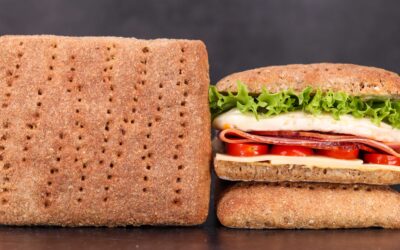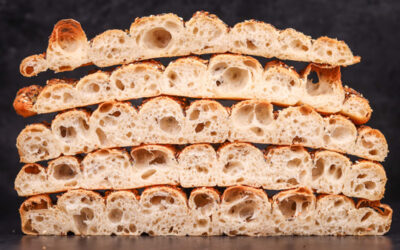Barbari bread or nan-e barbari is an Iranian flatbread. Quite a thick flat bread. With a bubbly and fluffy interior and covered with seeds. It has a distinct design of lines across the surface.
My version is a high hydration one and we will use the autolyse method to help us with gluten development. Not only has this got a lot of water but also a good amount (20%) of delicious olive oil. I will show you an efficient and simple way of adding this much oil to your bread dough.
Understandably some of you may think – High hydration? Lots of oil? – Must be difficult. But in fact, it is super simple. And quick too!
The result is a pillowy soft bread with lots of little air pockets in the crumb, and a crispy golden-brown crust topped with an assortment of crunchy seeds and sea salt.
You can use this recipe to make perfect focaccia also.
Watch the video down below for detailed instructions.
Ingredients
Autolyse –
250g (8.8oz) strong white bread flour
175g (6.2oz) water at around 10C (50F) if your kitchen is between 22C – 25C (72F – 77F) *
*To learn more about dough temperature control click here.
To finish the dough –
10g (0.35oz) water
5g (0.17oz) salt
3g (0.1oz) instant dry yeast or 3.6g (0.12oz) active dry yeast or 9g (0.3oz) fresh yeast
50g olive oil
Topping –
Sesame seeds
Nigella seeds
Caraway seeds
Poppy seeds
Oregano
Sea salt
20g (0.7oz) olive oil
You can use any toppings you like, of course.
Method
- Mix the autolyse. In a large bowl combine the water and the flour. Mix until there is no dry flour left. Sprinkle the salt over the dough and dimple it in with wet fingers. Cover and leave to hydrate for 1 hour.
- Mix the yeast with the remaining water and add to the dough. Squeeze the dough until everything is well combined.
- Tip the dough out on the table and knead using the stretch & fold method for 10 minutes. *Desired dough temperature 25C – 26C (77F – 79F). If your dough is warmer, then it will ferment more rapidly. If it is cooler, then it will take longer. Adjust proofing time accordingly. You may need to add or remove one fold and 15 minutes.
- Pour the oil into the bowl and roll the dough around in it to cover the whole surface. Give the dough ball a light fold before covering and fermenting for 15 minutes.
- Fold #1.
- Cover and ferment for 15 minutes.
- Fold #2.
- Cover and ferment for 15 minutes.
- Fold #3.
- Cover and ferment for 15 minutes.
- Fold #4.
- Cover and ferment for 15 minutes.
- Fold #5.
- Place the dough on a non-stick paper lined baking tray. Pour out any remaining oil over the dough. Spread the dough out a little.
- Final proof 1 hour. *During this time preheat your oven to 210C (410F) fan off.
- Top the bread. Start by pouring over and spreading the olive oil. Make the lines by pressing your fingertips right down to the tray through the dough. Finish by sprinkling with seeds.
- Bake for 25 minutes or until golden brown all over.
Enjoy whilst fresh as this kind of bread is best right after baking!
Keep in mind that the conditions in each kitchen are different, so fermentation times may vary for you. It is up to the baker to control the bread and react accordingly.
Your oven may be different too, so your baking time may vary.
Watch the video here



